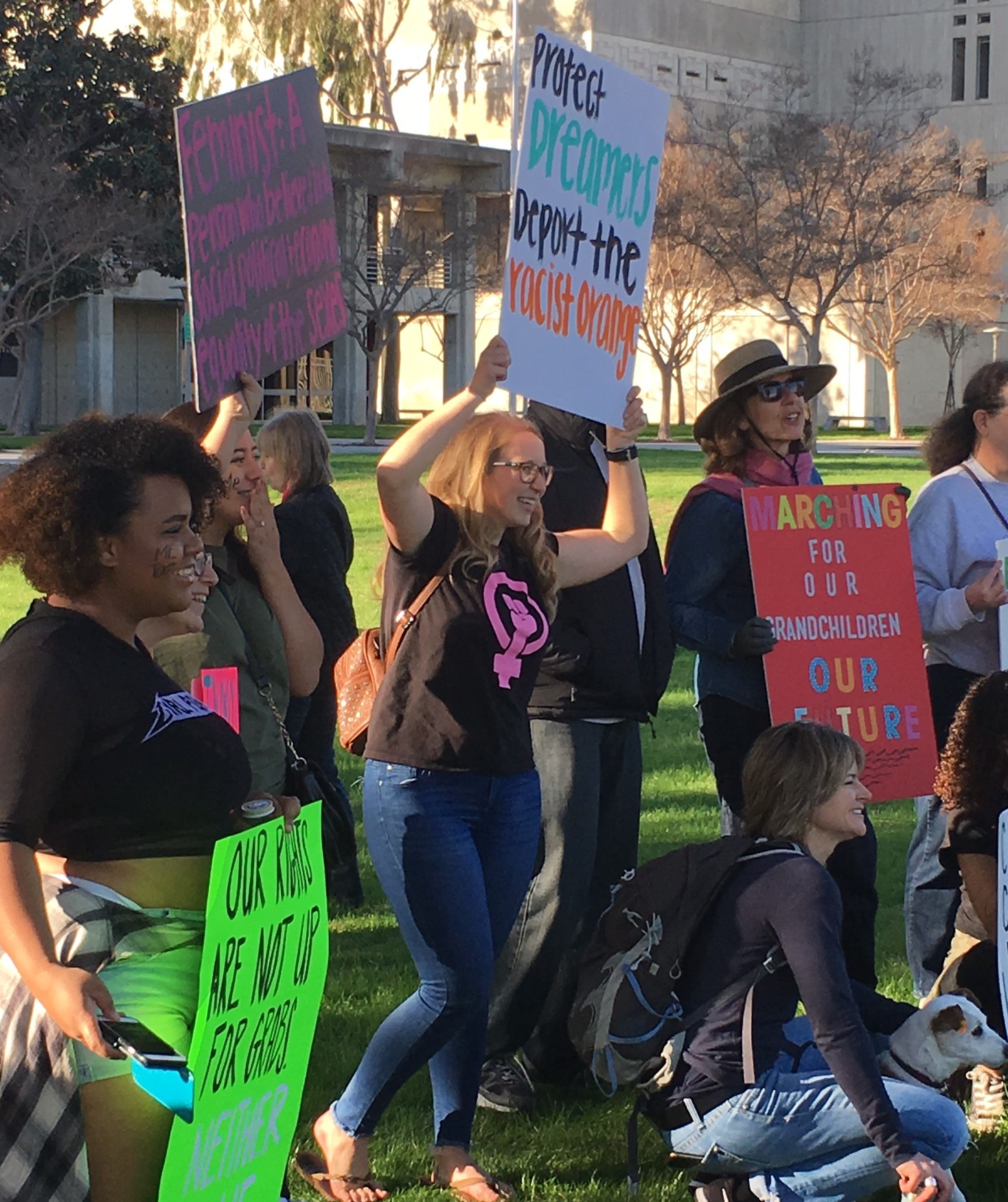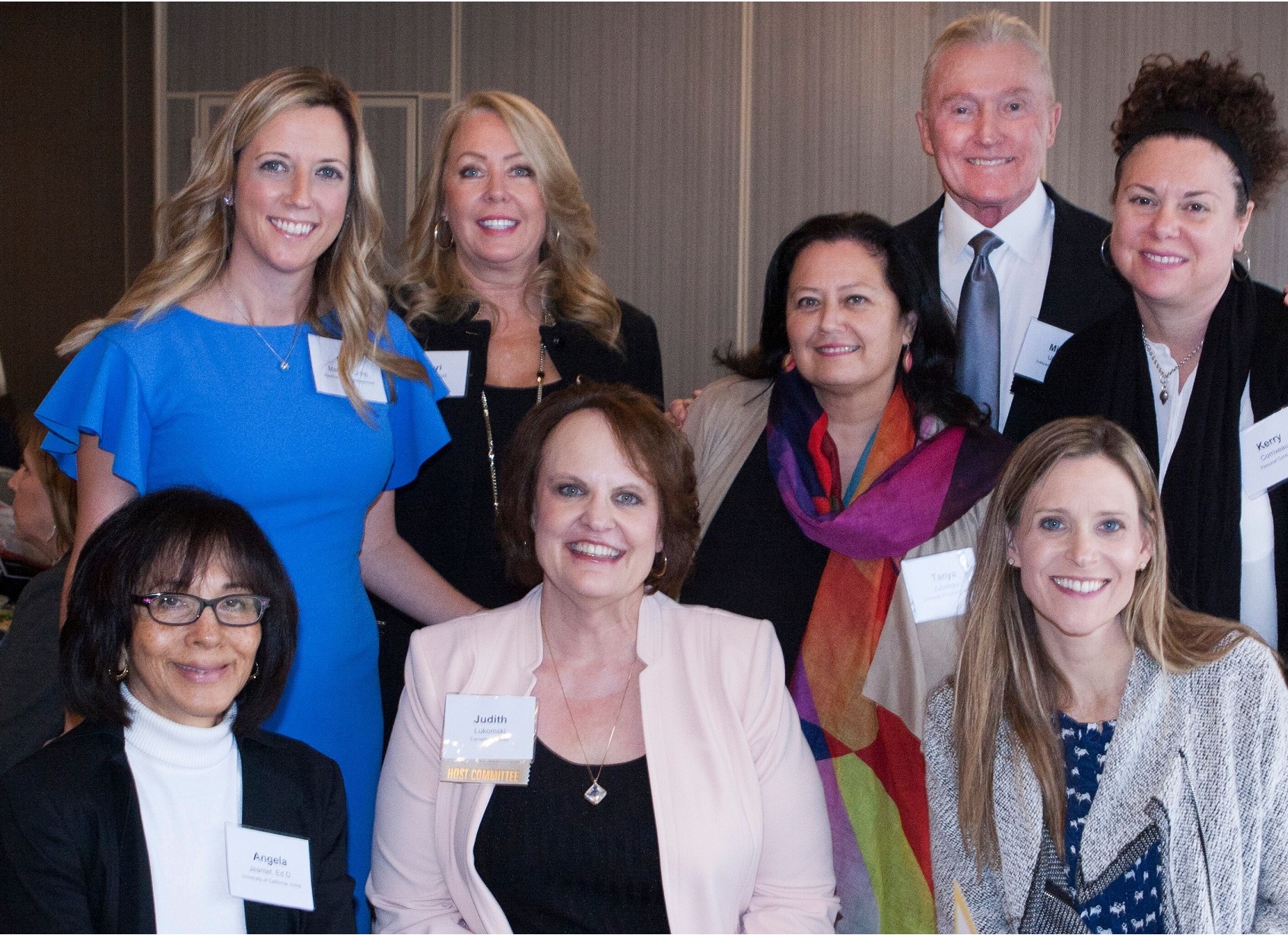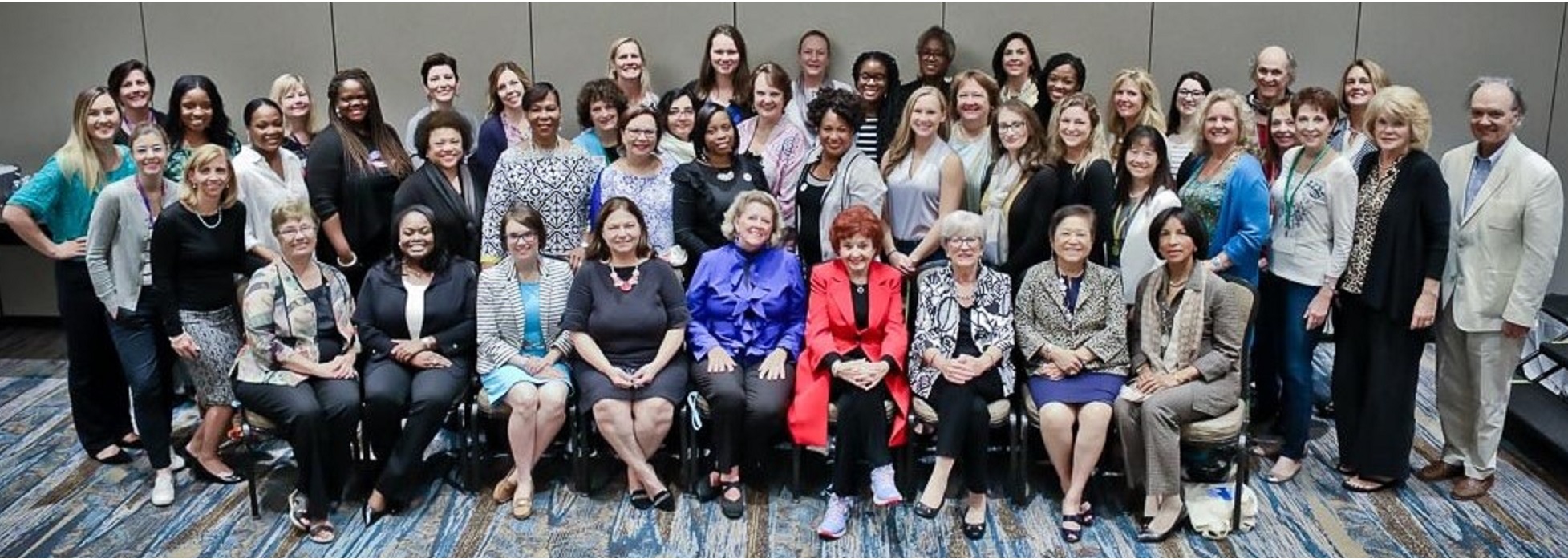Women at Work
In 2022, Kamala Devi Harris became the first female Vice President of the United States. She is the highest-ranking female official in U.S. history and the first African American and first Asian American vice president.
We invite you to learn about the women who led the movement for the right to vote at the beginning and those at the forefront today. (Pictured: Sojourner Truth, Susan B. Anthony, Elizabeth Cady Stanton). With the vote came the ability to influence decisions, increasing opportunity and equality in the workplace. Today, women and allies unite to uphold equality and press forward to achieve economic equity, the right to bodily sovereignty, and establish parity in leadership.
Crafted from the 1848 Seneca Falls Declaration of Sentiments, the Equal Rights Amendment introduced to Congress in 1923 stated: “Men and women shall have equal rights throughout the United States and every place subject to its jurisdiction.” During the 1940s, both major political parties supported the idea. However, the labor movement was committed to protective workplace laws, and social conservatives considered equal rights for women a significant risk to existing power structures. In the 1960s, Women’s Rights became a focus of the Civil Rights movement, demanding equal pay and representation.
On October 12, 1971, the U.S. House of Representatives passed the Equal Rights Amendment in an overwhelmingly bipartisan vote of 354 to 24. On March 22, 1972, the proposed Amendment to the Constitution was finally approved and sent to the states for ratification, a standard practice with every Amendment since the 18th (Prohibition), excluding the 19th. Congress placed a seven-year deadline on the ratification process.
Note: This time limit was not set in the words of the ERA itself. Instead, it is in the proposing clause. The ERA moved out of Congress, securing 22 of the necessary 38 state ratifications in the first year, after which the process slowed and took decades to complete.
As the original deadline approached, ERA advocates appealed to Congress for an indefinite extension of the time limit. In July 1978, the National Organization of Women coordinated a victorious march of 100,000 supporters in Washington, DC. Congress granted an extension until June 30, 1982. When the 1982 deadline for ratification arrived, the ERA was three states shy of the necessary 38 states for full ratification.
The ERA Amendment:
“Section 1: Equality of rights under the law shall not be denied or abridged by the United States or by any State on account of sex.
Section 2: The Congress shall have the power to enforce, by appropriate legislation, the provisions of this article.
Section 3: This amendment shall take effect two years after the date of ratification.”

In 2020, Virginia became the 38th ratifying State. On January 21, 2021, a joint resolution to extend was introduced, by U.S. Senators Ben Cardin (D-Md.) and Lisa Murkowski (R-Alaska), and Congresswoman Jackie Speier (D-Calif.), and Congressman Tom Reed (R-N.Y.). On March 17, 2021, the House passed the extension. Now is the time to finalize what is to be the 28th Amendment.
October 21st, 2021, Rep. Carolyn B. Maloney, Chairwoman of the Committee on Oversight and Reform, held a hearing entitled, “The Equal Rights Amendment: Achieving Constitutional Equality for All.” The hearing explored the current status of the ERA and the final steps necessary to certify the ERA as the 28th Amendment to the U.S.
Equity Economics
Prioritizing financial literacy is the key to achieving economic and social equality. Financially literate women have the knowledge and tools to grow their wealth and make value-based decisions supporting career choices and aligning with select causes. This approach helps fuel economic growth by building a broad movement in support of women-led and women-owned businesses.
There has been significant progress in workplace leadership as women hold an increasing number of management roles and several are Fortune 500 CEO’s. Still, the 2019 Women, Money, and Power Study, commissioned by Allianz Life Insurance Company, found women are struggling to make progress with financial literacy despite the advancement of the past few years. The pandemic has taken millions of women out of the workplace and will significantly impact women in leadership if we do not address the issues of childcare and healthcare.
Currently, on average white women earn 80 cents for every dollar a man earns, over a lifetime, a $450,000 loss. The chasm is even larger for women of color. The gender pay gap is the result of many factors, including occupational segregation, access to senior management roles, and direct pay discrimination. Racial bias, disability, access to education, along with age, also contribute to the earning difference. Consequently, different groups of women experience very different gaps in pay. Women also tend to make less, spending an average of 12 fewer years in the workforce than men, and typically have lower lifetime earnings resulting in smaller Social Security payments. It is even more critical women take ownership of their careers and finances as “The Great Wealth Transfer” 2030 draws closer.
We are here to help you as an individual and to provide organizational programs that build awareness and spark lasting change.

Vision Forward is a National Coalition of individuals and organizations in all 50 states working together for women’s economic, political and social equality in the United States. Vision Forward is a nonpartisan national women’s equality coalition headquartered at Drexel University’s Institute for Women’s Health and Leadership. Partnering with hundreds of Delegates and allied organizations with millions of members, Vision Forward is speeding up the pace of progress to complete the unfinished business of women’s equality.

Inaugural Orange County 50/50 Women on Boards
Women on Boards
When Women on Boards (Senate Bill 826) passed in 2018, one-fourth of California’s publicly-held corporations had no women directors on their boards. California is now leading the way as the first state in the nation to require all publicly-held domestic or foreign corporations whose principal executive offices are located in California to have at least one female director on their boards by December 31, 2019, either by filling an open seat or by adding a seat. Women on Boards is an important step in diversity and inclusion, as well as for the advancement of women. Source: California Secretary of State

